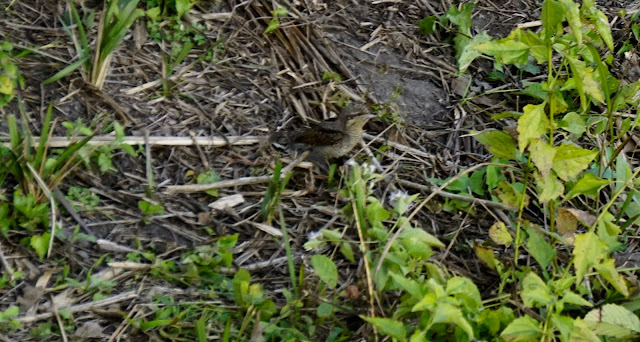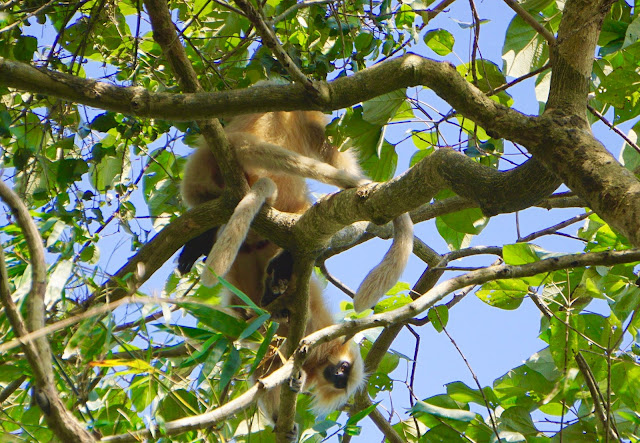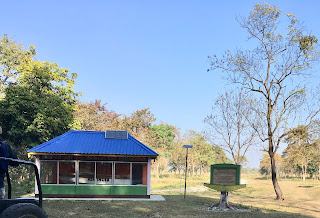May 2020
Trains are getting lost, flights are getting cancelled, locusts are swarming the plains of north India. As expected, cases are doubling in states like Assam.
August 2020
Floods in Assam, and the sanctuaries and animals are in distress, with no access to highlands for them.
Trains are getting lost, flights are getting cancelled, locusts are swarming the plains of north India. As expected, cases are doubling in states like Assam.
August 2020
Floods in Assam, and the sanctuaries and animals are in distress, with no access to highlands for them.
COVID continues its merry spread across cities and states, though it does seem to have slowed in Chennai. And I sill have not finished this post.
Here is another stab at it.
Here is another stab at it.
15th August 2020 - 7 months to the day, oh my goodness this definitely is getting finished today! What better way to mark our independence, than write about a visit to a remote corner of India early this year.
14th January 2020
Continued from here.
14th January 2020
Continued from here.
 |
| Goodbye Manas |
All woollens packed into my large bag - I was relieved to have brought an outsized bag, as I could just throw stuff in any which way, and now it had an added item - the bamboo "vase" which is about 18 inches long!
We bundled into our cars, said a big thank you to the Florican staff at Manas (I wondered if I would ever return there again), as set off for Orang/Mangaldoi.
 |
| A 10 am halt at Nalbari for tea, and we were exposed to the Bihu market wonders - all sorts of things. |
 |
| A man held a fish as if it was the most normal thing to do - maybe it was for him. Not for me. I gawped, just like the poor fish. |
 |
| The bamboo baskets all looked so inviting - but I followed a "Only look no buy" policy, and left without anything additional! This was a fishing set. |
 |
| We crossed Mangaldoi, and continued. Mustard fields were in bloom. |
At around lunch time - oneish - (yes, time is measured by mealtimes), we arrived at Orang! We were at the gate of the park, a newish resort - Green Planet just at the gate, but it was not large enough to accommodate us all overnight, so sadly we were trekking back into Mangaldoi for the night. But for now, a clean loo was most welcome.
Trying hard to make the boys who were helping us at lunch to understand that no we didn't need plastic bottles of water, but a jug would do nicely thank you. They looked at me as if I had gone mad....I suppose there was a lot lost in translation!
Orang - the first I heard of the place was in 2008, from Chithra, as this back of nowhere place - and now I was there/here, never mind!
We met Najib, another young naturalist, and now, along with Pranjal and Yuvan, we had a trio of young naturalists! Najib worked with Wild Wings, a local NGO in the area of wildlife conservation, and he was going to accompany us on our drive through Orang.
I was with cousin Kumar and Usha in the rearranging, and it was all in the family in our jeep.
Orang is a little park - 78 sqkm - on the north banks of the Bramhaputra, and if I'm not mistaken I recall Najib mentioning that it belonged to a Raja of the region. The vegetation was very much like Manas - grasslands, and silk cotton.
Orang is a little park - 78 sqkm - on the north banks of the Bramhaputra, and if I'm not mistaken I recall Najib mentioning that it belonged to a Raja of the region. The vegetation was very much like Manas - grasslands, and silk cotton.
Bird community of Rajiv Gandhi Orang National Park, Assam
The entire protected area was a human habitation till the last decade of 19th century (Talukdar and Sharma 1995). The area was inhabited by different ethnic groups. The villages were abandoned during the latter part of the 19th century, and in course of time, the area became covered by vegetation where animals took shelter. In 1915, it was declared a Game Reserve. The area was declared Wildlife Sanctuary in 1985 and upgraded to a National Park in 8th April, 1999. Entire area of the RGONP is the core part of recently declared Orang Tiger Reserve in December, 2016.
 |
| Sitting quietly in the shade was an Asian barred Owlet, looking on seriously at us. Soon it turned its back on us, but Suresh captured it sneaking a peek at us! |
 |
| The undergrowth was beautiful as was the canopy above...where to look? |
 |
| A fairy bluebird sat high on an exposed branch |
We stopped at a watchtower and took in the landscape


The Eurasian Wryneck
Then there was some scurrying in the undergrowth just below the watchtower, and Najib said it was a Eurasian Wryneck. Now me and my myopia took ages to spot it, but it kept everyone busy for a while as it scuttled among foliage, now you see it now you don't, the shutterbugs getting more and more frantic!
Finally, even I saw it! And even got some hopeless pictures of it.
 |
| The Eurasian Wryneck - Jynx torquilla - a lifer for me. It is a woodpecker, but what is it doing on the ground. Strange bird! |
 |
| It had these jerky movements and was always on the move. I learned that it is a ground feeder and has a long tongue that it uses to probe for ants. |
 |
| I saw the characteristic "namam" down its back, but it was really well camouflaged, and busy! |
 |
| There are videos on YT of this bird doing some interesting things with its rather supple neck. |
 |
| A beautiful capture by Sudar of said Wryneck |
I could imagine staying at this guest house and looking out on the vast grasslands below
 |
| The tall grass, with the trees beyond |
 |
| We just sat on the wood stumps, soaking it all in, as the sun slowly dipped and the light faded. As the sun lowered, the birds were returning to their roosts. |
 |
| It was a herbivore bonanza. Swamp deer, hog deer, boar, francolins, rhinos....all grazing peacably. No carnivore in sight. Egrets and kingfishers, drongos and bee eaters. |
 |
| About 10% of the area of the ONP is wetlands and water - the Bramhaputra river, with its tributaries Pachnoi and Dhanisiri, flow through these areas, and there are also many "bheels" or lakes. |
The Indian hog deer (Hyelaphus porcinus)
 |
| Now under the IUCN endangered list, I hoped that they continue to thrive here in Orang. |
 |
| As with all of the creatures of the Bramhaputra region, the annual floods mean they have to move to highlands, but with more roads and development cutting off access to highlands, there is huge loss of hog deer every monsoon. |
 |
| They needs grasslands to fawn, so their successful breeding is under threat with dwindling grasslands. |
 |
| It was only 430 in the evening, but the sky ws darkening, and it was soon time to leave the park, but we had one last encounter, almost missed. A lone elephant to the left of the road watched us go by. The jeep driver was a little skittish and didn't want to linger - discretion around lone male elephants was what he muttered. |
 |
| Beautiful sunset views as we bounced along the jungle roads to exit the parks, accompanied by the screeching of parakeets on their way back "home", wherever that was. |
We exited the park and stopped for tea, and a tete a tee with Najib and his work. The tea was not worth writing about, but there was much banter as we waited in the chilly darkening evening air.
It was a couple of hours ride to Siddharth Palace, which was named more in hope and wish than in fact, but rather interesting. Steep steps and up and up. Rooms with glamorous velvet curtains behind which were plain brick walls, hmm. And the steps (I kid you not). were not flat but seemed like out of that nursery rhyme - there was a crooked house. All those days at Manas we were served hot simple meals and it was fine. Somehow this veneer of poshness and floating oil always makes me suspicious. So I ate sparingly (yes I can do that, believe me). The waiters were obsequious and supposedly the owner had a Madras connection - he had come to Chennai to do his engineering!! It was Bihu night, and we were in for all night singing and dancing we were warned, and yes they partied all night long to a mixture of Bollywood and Assamese music.
We did not see the pygmy hogs - another species under threat because of lost grasslands. ONP is a site of some pygmy hog restoration programme.
Day 5 - on to the river!
We of course were up with the lark, but the staff were all hungover and asleep and Pritam came down to find that we were locked in hahahaha. Some Hotel California like situation. After some hollering, we were let out by some sleepy waiters. I went for a stroll and found some interesting things.
 |
| An Apollo Chennai outreach! |

| A doggie with offal |
 | |
|
I had packed up and come for breakfast leaving Devika in the room to finish and join us downstairs. Cars were getting loaded. She wandered down and told me that she thought I had left my soap behind. So I went on up again on those crooked stairs to our room with the satin curtains, and retrieved my soap, and there I saw rubber chappals, green, near the bathroom door. I muttered to myself that Devika has forgotten her slippers, picked them up with a flourish and went off downstairs after a final look around to ensure nothing else was abandoned.
I marched purposefully to Devika calling out to her and waving the slippers, as she was loading her bag and I very helpfully wanted her to put it in before the bag got put away in the car boot. The waiter from the hotel was following me in a strange fashion. At this point Devika told me, in her usual unhurried and calm voice, it's not mine Ambika, and .....I looked from slipper to her to the following waiter to all the other MNS members standing around looking on. The waiter sheepishly said, woh hamara hotel ka chappals hain (actually I should've been the sheepish one you would think). There was much tittering and guffawing as I hastily handed it back to him and ran off to wash my hands. "What else are you smuggling away Ambika?" was the refrain, and Suresh was sure I had watched the movie If it's Tuesday it must be Belgium!
 |
| And then we were off, to our next experience on the river itself. |




















































